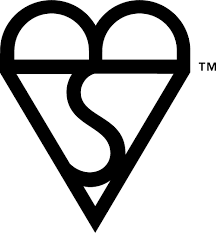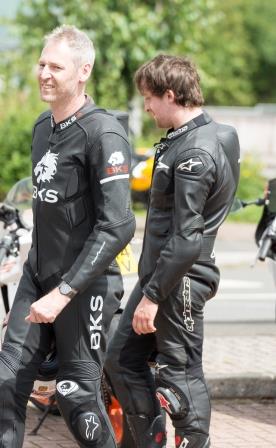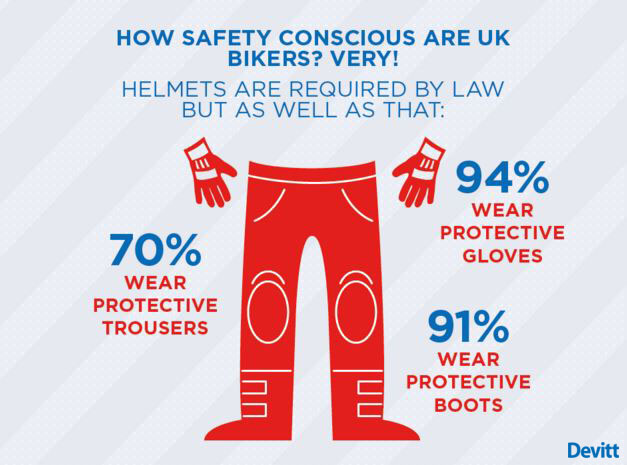Wearing the Correct Safety Gear
It’s so important that you are kitted out with the best motorcycle safety gear you can afford, and although helmets are the only items that legally should be worn whilst riding, it’s definitely worth looking into how else you can protect yourself when out on the roads.
Let us help you make the decision as to what safety gear you should go for…
Motorcycle Helmets
It is against the law to ride a motorcycle without wearing a helmet, this applies to both riders and pillions.
Below is the range of safety requirements according to gov.uk for helmets worn in the UK. Helmets must meet one of the following standards:
- British Standard BS 6658:1985 and carry the BSI Kitemark
- UNECE Regulation 22.05
- Meet a European Economic Area member standard offering the same safety as BS 6658:1985, and have a mark equivalent to the BSI Kitemark
How to ensure your helmet has passed the safety regulations:
SHARP tool uses a great tool which allows you to check whether a certain helmet meets the required UK standards. Just select the helmet make and model and there it has it, the protection quality of the impact zones, the price, construction materials and most importantly the safety standards.
Another way of finding out whether your helmet meets the safety standards is by checking whether it has an ECE marking label. This will either be stuck or moulded onto the top right hand corner of the visor.
How to find the right helmet for you:
- Search for the helmet using the SHARP tool
- Please try to avoid open face helmets, although they may look cool and have a retro feel they really can’t compare to a full faced helmet as there’s little protection around the chin and jaw area
We always say, buy the BEST helmet that your money can buy; you can’t put a price on safety – especially when it comes to your head!
Pillions and helmets:
It’s a legal requirement for pillions to ride with a motorcycle helmet! So, if you’re used to taking one specific person out regularly i.e. your partner or child then it’s important that they too have a helmet to fit their head comfortably and securely.
When selecting a helmet for a child it is important to think about the style; if you were to go with an open face helmet, although they may allow for more room to breathe, the child’s face and especially chin area will be more exposed. If the child doesn’t feel restricted or too enclosed whilst wearing a helmet then a full faced or dual sport style may be more appropriate.
Custom helmet:
Another great way of insuring your helmet fits comfortably and suits the shape of your head is to consider a custom fitted helmet.
The helmet usually comes with extra crown, cheek and neck-roll pads and is designed with that specific user in mind. So, if you really struggle to find a helmet to fit your head comfortably then a custom helmet could be a consideration for you!
Types of motorcycle helmets:
- Full face
- Flip up
- Open face
- Dual sport
- Off road
- Modular
Protective motorcycle clothing:
There are no laws to say you have to wear protective clothing; however we do highly recommend you wear such protection. Failure to wear protective clothing such as leathers, approved armour or motorcycle jeans can lead to serious injuries which could have been easily prevented.
Leathers:
Leathers come in a variety of all different shapes and sizes, from one piece suits to separate jackets and trousers. They can come with a range of different material linings and in a number of styles, so when it comes to finding the right fit and look for you there are so many options! Let us help you…
Motorcycle jackets:
If you’re able to get yourself a decent jacket then you’ve made a good start to your safety gear collection. With styles ranging from summer, winter, sports, short, long; you’re bound to find the right jacket to suit your needs.
Some jackets also come with a zip around the waist, giving you the option of attaching the jacket to a pair of compatible motorcycle jeans.
You’ll find there is extra protection within most jackets, for example removable armour on the shoulders and elbows, removable thermal lining and lining around the collar for extra comfort.
Motorcycle trousers:
It’s common for most retailers to label motorcycle trousers as jeans. However, this doesn’t mean they’re all denim fabric, it also covers leather. You could find a pair that are compatible with your jacket to give you the option of creating a one piece suit, this gives great versatility!
Styles of motorcycle trousers:
Touring:
Suitable for riders who spend many hours riding
Great for all kinds of weather
Comfortable and versatile
Cruiser:
Suitable for cruiser style riding
Great for a relaxed style of riding
Street/Racing:
Best suited to those who participate in track racing and also great for road use
Probably offer the best protection of all the styles
Dirt riding:
Suitable for dirt track or trails riders
Offer great protection
Designed to allow room for extra movement
One piece suit:
It’s in the name really; a one piece suit is a full body suit with no disconnections around the waist. They’re a great option if you tend to do a lot of track racing and some riders may argue that they offer the most protection.
Materials:
Textile
Leather
Denim
Covec
Synthetic textiles
Mixed
Safety:
To specify which type of motorcycling clothing is the safest is not entirely possible. As mentioned, it’s important to take into account factors such as your riding style, the features you find most important, and comfort.
Waterproof Clothing:
Now waterproof clothing won’t protect you from seriously injuring yourself if you are unfortunate enough to have a fall but they certainly will protect you from getting drenched in the good old British weather!
Base Layers:
Thermals
Neck warmers
Windproof clothing
Boot socks
Balaclava
Base layer gloves
Body warmer
Undersuit
Above are just a few items of clothing that can work towards protecting you from not only cold weather environments but also from the heat.
Breathable layers to keep you cool in the summer have some pretty decent built in technology that allow you to ride about on a warm day and not over heat, even with your leathers on over the top!
It’s also a great idea to get yourself a couple of balaclavas or neck warmers, during those winter months it can get extremely cold while out on the bike. An item of clothing to cover your ears, neck and head is the perfect thing to keep you warm…you’ll see loads of bikers have them!
How Safety Conscious are Bikers in Britain?
Devitt conducted a survey and discovered that bikers in Britain are particularly safety conscious when it comes to wearing the correct safety gear. Just take a look at the 2015 statistics below.
Visors and Goggles:
It’s a very good idea to get your hands on a pair of goggles or visor; they will protect your eyes from irritating nuisances such as insects, dirt, wind and rain. Imagine riding down the road and having a fly land straight in your eye, not only would this hurt but it is also extremely dangerous!
Remember to regularly clean your goggles or visor with warm soapy water as other chemicals may scratch the surface. If the surface appears to be heavily scratched then it’s a good idea to replace your goggles or visor as this may distort your vision.
The safety requirements on which your goggles or visor must comply with, either:
- British Standard BS BSI Kitemark
- A European standard to the equivalent of the British and carries a mark equivalent to the BSI Kitemark
High Visibility Clothing:
If you’re going to purchase an extra piece of clothing to wear while out on your bike then we strongly advise that you put visibility clothing at the top of your shopping list!
It’s not expensive to purchase and it’s a really simple item of clothing but the effects are invaluable! You can get yourself a high vis safety vest for less than £10 and wearing one of these could be a matter of life or death.
Check out this advert from THINK!. We may not be able to ride with huge signs on our backs, but high visibility clothing can make us stand out to other road users!
Motorcycle Gloves:
Now gloves, like all the clothing listed above (apart from helmets) are not a legal requirement, but choose not to wear them and you’ll lose a serious amount of skin and flesh if you have the miss fortune of falling from your bike. What’s the first thing you do in a crash? You put your hands down. If you’re wearing a decent pair of gloves you could be seriously saving your hands from long term damage!
How to Find the Right Gloves For You:
- Be sure you can move your fingers easily in the gloves
- Check you can operate the controls on your bike while wearing the gloves
- Make sure they’re of a good quality, check for solid stitching and lining
- Your winter gloves should have a cuff that can cover the end of your sleeves, preventing wind and rain from entering
- Check the gloves are secure and can’t be pulled off easily when the strap is fastened
- Are the gloves comfortable? You don’t want them chafing or scratching your skin so get a comfy pair!
Motorcycle Boots:
It’s paramount to protect your ankles and feet as these are the areas that are most likely to be injured in the unfortunate event of an accident.
Here are a few things to consider when purchasing your new pair of boots:
- They should be nice and sturdy
- Make sure they’re above ankle-height…try them on!
- Made from at least 2.5mm think good quality leather
- Get a waterproof pair, you’ll thank yourself for it!
- The soles must be strong to prevent your feet from getting crushed
- If they’re stitched and bonded then you’re on to a winner! (you don’t want them falling apart)
- Check the soles have good grip
- The soles should be at least 4mm thick
- Test the boots out while sitting on your bike. Can you operate the foot controls properly?
Check the fit:
Take a walk in your new boots, make sure they’re comfortable and don’t rub on your feet. It’s a good idea to try a few different sizes so you know you’ve definitely got the right fit.
Are they flexible?
After a good few wears your boots should become softer and more comfortable. Give them a bit of a bend in the store to check their flexibility, if they’re too stiff they’ll become uncomfortable!
Colours:
There’s nothing worse than finding the colour on your boots have stained your feet and socks so it’s a good idea to get a pair of boots that are colourfast.
If you would like information on personal accident cover with helmet and leathers then we’re happy to help!




